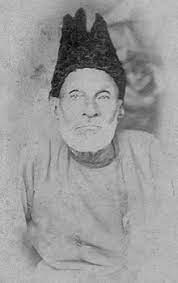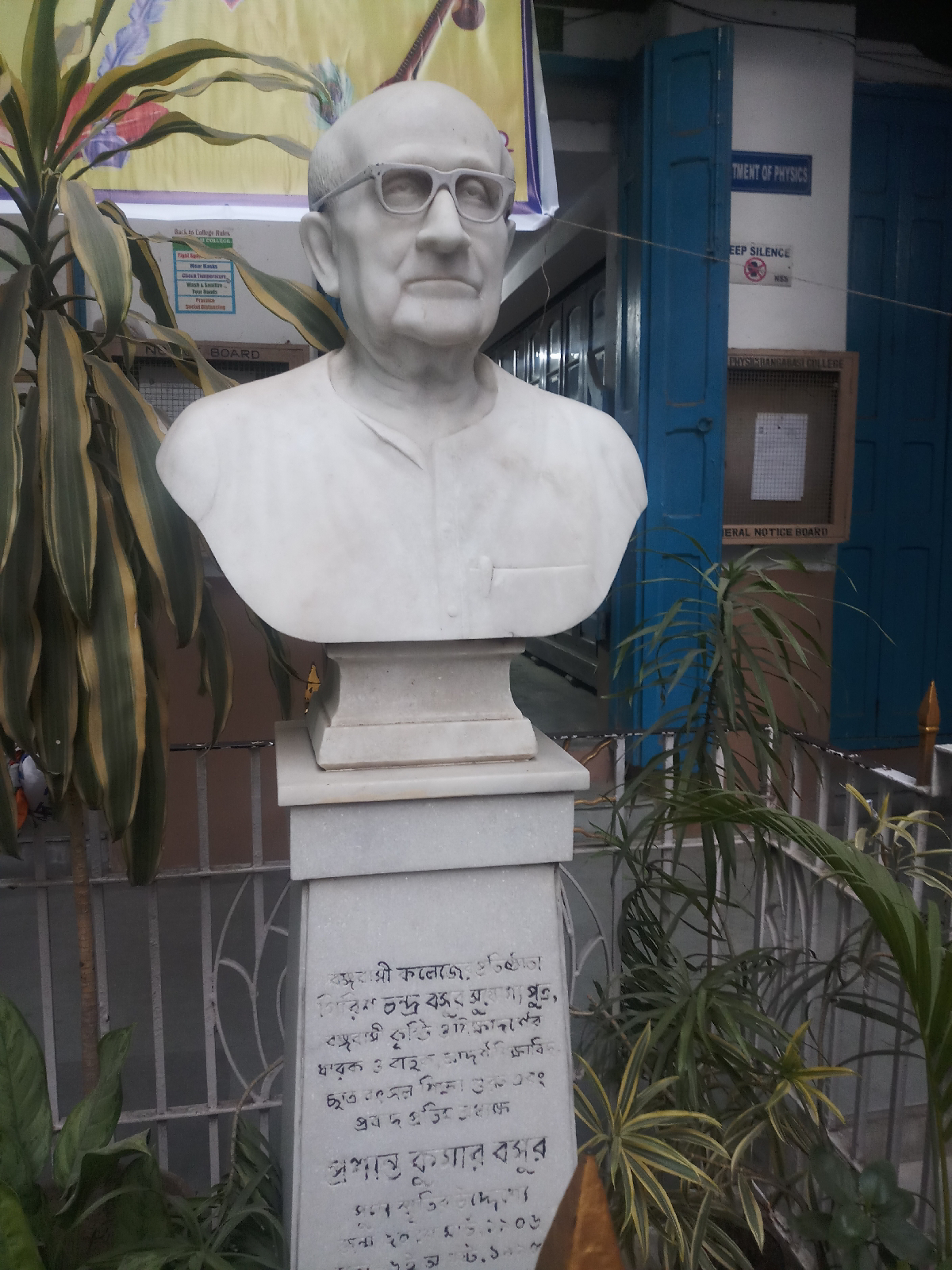Sister Nivedita's contributions and abodes
- Sister Nivedita, born Margaret Elizabeth Noble, was the disciple of Swami Vivekananda and one of the prominent architects of modern India driven by the zeal of spirituality, service to mankind and love for India. She was instrumental in inspiring all of India's scientists (e.g, Sir Jagadish Chandra Bose, Basiswar Sen), artists (like Abanindra Nath Tagore, Nandalal Bose), educationist (like Brajendra Nath Sil Ramananda Chattopadhyay, Kumud Bandhu Sen), and freedom fighters (like Rasbihari Ghosh, Arabinda Ghosh, Barin Chandra Ghosh, Bipin Chandra Pal). Rabindranath Tagore said: "In the day of his success, Jagadish gained an invaluable energizer and helper in Sister Nivedita, and in any record of his life’s work her name must be given a place of honour." Her book Kali, the Mother influenced Abanindranath Tagore who painted Bharat Mata. Her contribution include women’s education and empowerment, helping foster a sense of Indian nationalism, reviving some art forms, promoting science, propagating civic virtues and working on humanitarian relief.
- Margaret Elizabeth Noble was born on 28th October 1867 in the town of Dungannon in County Tyrone, Ireland as the eldest child to Mary Isabel and Samuel Richmond Noble. Her father, who was a pastor, taught that service to mankind is the true service to God. She lost her father when she was 10. Margaret was educated at Halifax College, run by a member of the Congregationalist Church. In 1884, she started teaching at a school in Keswick.
- Sister Nivedita met Swami Vivekananda in 1895 in London and travelled to Calcutta 1898. Within a few days of her arrival in India, on 17th March 1898, Margaret met Sarada Devi, wife and spiritual consort of Shri Ramakrishna Paramhansa, who, surpassing all language and cultural barriers, embraced her. Swami Vivekananda gave her the name Nivedita (meaning "Dedicated to God") when he initiated her into the vow of Brahmacharya on 25th March 1898.
 |
| The prolific writer and educationist |
- Nobel spent her first days in Calcutta at 16 Bosepara Lane. Architecturally, the house was, in Nivedita’s words, “a rambling specimen of the true old Hindu style of building.” It was host to stalwarts of 19th century Bengal, and witnessed events that shaped a nation. The house was handed over to the Ramakrishna Sarada Mission in 2013 and is maintained today as Sister Nivedita Heritage Museum and Knowledge Centre. She shifted her historic girls’ school, and later lived at the building next door at 17, Bosepara Lane.
 |
| Sister Nivedita the offered one (picture from Internet) |
16 Bose Para Lane: Upon entering the premises one is greeted with a Voice narrative which mentions the indelible mark made by this building on women’s emancipation, nationalism, education, arts, science, history, literature, service to mankind and Indian renaissance. The building has witnessed the confluence of spiritualism and intellectualism. This house at 16,Bosepara Lane(now 16A SaradamoniSarani) was Sister Nivedita’s first permanent home in India. The restored Heritage house with state-of-art technological installations and a wealth of audio visual resources resonates with the living presence of Nivedita. The exhibits distributed over different portions of the house showcases the life and works of Sister Nivedita and her contemporaries in a befitting grandeur to respect the past heritage.
Gallery
1: This was the study
room of Sister Nivedita. The items on display include three brass paper weights
gifted by AJC Bose, a picture of Swamiji signed by himself, a deity of Buddha,
a hand fan and lamp. The chair and desk now has avirtual mannequin of Sister Nivedita.
The drawings by Nivedita and her students are projected on a wall.
Courtyard: Marked by a pleasant ambience
with ample light and air, this courtyard has been the place for exchange of
ideas. It was frequented by Swami Vivekananda and others of the monastic order,
Sri Aurobindo, AcharyaJagadish Chandra Bose, Lady Abala Bose, Rabindranath Tagore
as well as the ladies and young girls from the adjoining neighborhood. Information
regarding the events at the courtyard and the pictures taken here are displayed
on iPad. Restoration of the building was done using same or similar materials
and some original pipes are still retained. The place bears a testimony to
decisions taken regarding starting of the school for girls as well as the deliberation
of the speech ‘Kali the Mother’ at Albert Hall. Swami Saradananda held kothokatharashor for delivering fable
narratives among women.
Thakurdalan: This area served a multitude of
purposes being a prayer place for school children among others. Events here led
to the establishment of Sarada Math. As a movement against caste system, Maa
Sarada feed
devotees of all castes at this place. Two wall engravings show the transfer of
divine power to Niveditaand the envisioning of the Sarada Math by Swami Vivekananda.
The Math was established much later in 1953-1954 at RashikBhita, Dakshineswar.
2 D Mural
manifestation displaying 8 incidents Nivedita’s journey and contributions –
(i) Amarnath
Pilgrimage: 11th May 1898
(ii) Nivedita
taking vow: 25.3.1898
(iii) Request
to girl students to join school, at Balaram Bose’s house: 12.11.1898
(iv) Sarada
Devi inaugurating school 13.11.1898; in presence of Swami Vivekananda, Swami Brahmananda and
Swami Saradananda, Maa Sarada did puja of Ramakrishna to mark the inception of
Ramakrishna Sarada Mission Sister Nivedita Girls’ School
(v) Nivedita’s pedagogy
through practical techniques
(vi) Sanitation
work during plague 1899
(vii) Contributions
of Sister Christine and Sister Sudhira
(viii)Role
of Nivedita’s pupil Parul, later Prabrajika Bharatiprana Mataji, the first
president of Sarada Math
Gallery
2:This room is
dark and has a multi-dimensional installation narrating the transformation of
Margaret Elizabeth Nobel having Celtic upbringing to BhaginiNivedita,the one who ‘gave her all’ for India. At the exit
point is a painting by Anasin Mundi.
Gallery
3: A timeline
based on the artefacts in the archive marks Sister Nivedita’s life from Ireland
to Calcutta. A framed stitching of the logo of Vajra with the writingBandeMataramwhich
Nivedita wanted to be the 1stNational flag in 1906 is found.Other
items include a Kashmiri fire pot, tree plucking basket, Vajra pendent kept by
Nivedita while giving speech and a brass thunderbolt gifted from Mahant Maharaj
of Bodhgaya.
Zenana
court surrounded
by rooms used at that time for daily living is now covered by glass roof. Sarada
Devi lived in this house for one year with family members. The pictures of Sister
Nivedita’sf ather, mother, family members along with chair and devan used by her
are on display. Paintings gifted by Nandalal Bose, a Phygital book depicting
life and contributions of Sister and a statue of Maa Sarada are present.
Audio
visual show on
the life and works of Nivedita captivates the visitor. Special emphasis has
been laid on the foundation of girls’ school and crusade against prejudices. Being
a spiritual institution, Ramakrishna Math was discontented over Nivedita’s involvement
in freedom movement and debarred her from involvement with the Mission. Her
life epitomises self-sacrifice and her last days were amidst poverty and
starvation.She was named as Lokmata
by Tagore and it is still upon us Indians to shun prejudices and follow the path
shown by Nivedita for attaining social and personal upliftment.
On the corridor
while entering gallery 4, is a bioscope trough which one sees the places where
she visited.
Gallery
4:The poignant
feature of this room is the installation of touchscreen technology. Originally
used as thesewing room, presents embroideries by Nivedita and her students. Panels
demonstrate Nivedita’s contribution to literature, nationalism, education,
science and art. Interactive book panel takes one through the eight books
authored by Nivedita. Abanindranath Tagore’s painting of Bharat Mata is present,Visitors
leave their mark by making their embroidery. A large window overlooks the
thakurdalan below from where Nivedita used to overlookritualistic celebrations
when her physical presence generated social ostracism. An interesting hand
sensor device narrates the contributions of Stree
Shakti, nine ladies who visited or stayed here: Maa Sarada, Gopaler Ma,
Yogin Ma, Golap Ma, Josephine MacLeod, Dhira Mata, Sister Christine, Sister
Sudhira and Bharatiprana Mataji. Pala gaan
and Patachitra highlighting the
Ramakrishna-Sarada-Vivekananda movement is on exhibit.
Nivedita’s
room: One is
captured by the serene and meditative ambience of this room which was later
used by Sister Christine. The displayed items include apendent bearing images
of Ramakrishna-Vivekananda, a Christian emblem, an imaginary painting by a German
artist of Sister Christine, as well as a bed and chair. The ivory box where
Nivedita kept her meditation bead (japa
mala) is on display, the bead has however been lost.Just in front of the
room is a life sized model of Sister Nivedita loving gazing at the visitors.
Upon exiting the
room is a narrow staircase which leads to the terrace. A Neem tree, revered for its medicinal importance in Indian folklore,
used to enter the house; a replica of this tree is now kept. Sister Nivedita
had a vision showing the coming of The Lord’s Messenger down this very
staircase.
17
Bose Para Lane:
Sister Nivedita’s school had to be closed due to shortage of funding. Nivedita
then travelled back to Europe and when she returned on Feb 1902 she started
staying at this house. The school was reopened on the auspicious day of
Saraswati puja. A beautiful wall painting adorns the exterior of this building.
- Date of visit: 06.05.2022. Photography and use of mobile phones is strictly prohibited within premises. The website provides virtual tour, archival pictures and detailed information:
.jpg)
- Nivedita was an educationist from her very early age and in India she was the pioneer in women education. She stared 'Sister Nivedita Girls' High School' in North Calcutta in 1898 which to date imparts education for all round development of girl students. The school still exists and remains a vigorous source of good education for the girls.
 |
| Sister Nivedita Girls' High School (picture from Internet) |
- Sister Nivedita breathed her last on 13th October 1911 at Roy Villa, Lebong Cart Road, Darjeeling. She started visiting and staying at Darjeeling from 1903. This four storied European castle-like structure is about 115 years old and is named after its original owner, Dwarakanath Roy. He was the brother of Mr. P. K. Roy, the first Principal of the Presidency College. Famous scientist & botanist Acharya Jagadish Chandra Bose rented this premises from Dwarakanath Roy. Later, when Sister Nivedita’s health was deteriorating, he & Lady Abala Bose invited Sister Nivedita to stay in this house. Dr. Nil Ratan Sarkar and scientist Basiswar Sen were also present in the Roy Villa when Sister Nivedita left for her heavenly abode.
- Her fearless spirit, love for mankind, indomitable will power and passion for education and above all her spiritual power makes her a true champion of India. “The boat is sinking, but I can yet see the sunrise”- were the last words of this noble soul.
 |
| Roy Villa |
 |
| Staircase to the first floor |
 |
| Life size portrait |
 |
| Writing desk used by Nivedita |
 |
| Transistor used by Sister Nivedita |
 |
| Sign to her room |
 |
| The worship altar |
 |
| Opening ceremony |
 |
| Decorated hallway |
 |
| Glimpse of the exhibit |
 |
| Invitation card |
 |
| Programme schedule |
 |
| Beside the stage |
 |
| Beside the stage |
https://darjeeling.gov.in/tourist-place/roy-villa/
http://www.rkmdarjeeling.org/history.html
https://en.wikipedia.org/wiki/Sister_Nivedita
http://www.sisterniveditahouse.org/
.jpg)
.jpg)




.jpg)






.jpg)









Comments
Post a Comment